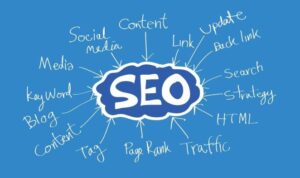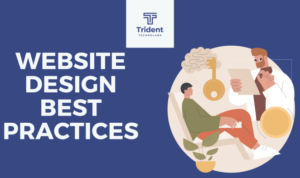Email Marketing Tips opens the door to maximizing your outreach potential like never before. Get ready to dive into the world of successful email campaigns and unlock the secrets to engaging your audience in style.
From the importance of email marketing to crafting compelling content and analyzing key metrics, this guide has got you covered with all the essential tips and tricks.
Importance of Email Marketing
Email marketing is crucial for businesses as it provides a direct line of communication with customers, allowing for personalized messages to be sent at scale. This form of marketing has a high return on investment (ROI) and can help businesses build brand loyalty, drive sales, and increase customer engagement.
Benefits of Email Marketing
- Cost-effective: Email marketing is a cost-effective way to reach a large audience compared to traditional marketing methods like print or TV ads.
- Targeted messaging: Businesses can segment their email lists based on customer preferences and behaviors to send relevant and personalized content.
- Measurable results: Email marketing platforms provide analytics that allow businesses to track open rates, click-through rates, and conversion rates to measure the success of their campaigns.
Examples of Successful Email Marketing Campaigns
Starbucks Birthday Rewards:
Starbucks sends personalized birthday rewards to their customers, increasing customer loyalty and driving repeat purchases.
Amazon Product Recommendations:
Amazon uses customer purchase history to send personalized product recommendations via email, resulting in increased sales and customer satisfaction.
Building an Email List

Building an email list is crucial for any successful email marketing campaign. A quality email list consists of engaged subscribers who are genuinely interested in your content and offerings. Here are some effective ways to grow your email subscriber list:
Offer Incentives
- Create enticing lead magnets such as e-books, exclusive content, or discounts to encourage visitors to sign up for your email list.
- Run contests or giveaways that require participants to subscribe to your email list for a chance to win.
Optimize Website Sign-Up Forms
- Place sign-up forms prominently on your website, preferably on high-traffic pages or as pop-ups to capture visitor attention.
- Keep sign-up forms simple and easy to fill out to increase conversion rates.
Utilize Social Media
- Promote your email newsletter on social media platforms to reach a wider audience and drive traffic to your website.
- Encourage followers to subscribe to your email list by highlighting the value they will receive from joining.
Engage with Current Subscribers
- Regularly send valuable content and updates to your existing subscribers to keep them engaged and interested in staying on your list.
- Encourage current subscribers to share your emails with friends and family to expand your reach organically.
Crafting Engaging Email Content
Crafting engaging email content is crucial to catching the reader’s attention and driving action. From subject lines to email design to personalization, every aspect plays a key role in the success of your email marketing campaign.
Compelling Subject Lines
Subject lines are the first thing recipients see in their inbox, so they need to be attention-grabbing. Here are some tips for creating compelling subject lines:
- Keep it short and sweet: Aim for 50 characters or less to ensure the entire subject line is visible on all devices.
- Use personalization: Include the recipient’s name or other personalized details to make the email feel more tailored to them.
- Create a sense of urgency: Use words like “limited time offer” or “don’t miss out” to encourage recipients to open the email right away.
- Avoid clickbait: Make sure the subject line accurately reflects the content of the email to build trust with your subscribers.
Designing Visually Appealing Emails
Visually appealing emails are more likely to capture the reader’s attention and keep them engaged. Here are some best practices for designing visually appealing emails:
- Use a clean layout: Make sure your email is easy to read and navigate by using a clean, organized layout.
- Incorporate images: Use high-quality images that enhance your message and make the email visually appealing.
- Choose a responsive design: Ensure your email is optimized for mobile devices to reach a wider audience.
- Include a call to action: Make it clear what action you want the recipient to take by including a prominent call to action button.
Personalizing Email Content
Personalizing email content can significantly increase engagement and conversion rates. Here are some strategies for personalizing email content:
- Segment your email list: Divide your subscribers into different segments based on their preferences, behavior, or demographics to send more relevant content.
- Use dynamic content: Tailor the content of your emails based on the recipient’s past interactions with your brand to make the email more personalized.
- Address recipients by name: Use merge tags to include the recipient’s name in the email for a more personalized touch.
- Send targeted offers: Use data from past purchases or interactions to send targeted offers that are more likely to resonate with the recipient.
Email Automation

Email automation is a powerful tool in email marketing that allows businesses to send targeted and timely messages to subscribers based on specific triggers or actions. By setting up automated email campaigns, businesses can save time, increase efficiency, and deliver more personalized content to their audience.
Benefits of Email Automation, Email Marketing Tips
- Increased efficiency: Automating email campaigns saves time and resources by allowing businesses to schedule emails in advance.
- Personalized communication: Automated emails can be tailored to individual subscriber preferences, increasing engagement and conversion rates.
- Improved targeting: By segmenting subscribers based on behavior or demographics, businesses can send more relevant content to specific groups.
- Enhanced customer experience: Automated emails can provide timely information, updates, and offers to subscribers, improving overall satisfaction.
Examples of Automated Email Campaigns
- Welcome series: Send a series of automated emails to new subscribers introducing your brand, products, and services.
- Abandoned cart emails: Remind customers of items left in their shopping cart and encourage them to complete their purchase.
- Re-engagement campaigns: Send targeted emails to inactive subscribers to rekindle their interest in your brand.
Tips for Setting Up Effective Email Automation Workflows
- Define your goals: Clearly Artikel the objectives of your automated campaigns to ensure they align with your overall marketing strategy.
- Segment your audience: Use customer data to create segments for personalized and targeted email content.
- Create engaging content: Craft compelling subject lines and email copy to capture subscribers’ attention and drive action.
- Test and optimize: Continuously monitor the performance of your automated campaigns and make adjustments based on data and insights.
Email Marketing Analytics
In the world of email marketing, tracking key metrics is essential for measuring the success of your campaigns. By analyzing email marketing data, you can gain valuable insights that will help you optimize your strategies and improve your overall performance.
Importance of Tracking Key Email Marketing Metrics
- Open Rate: This metric indicates how many recipients actually opened your email. A high open rate signifies that your subject line and content are engaging.
- Click-Through Rate (CTR): The CTR shows the percentage of people who clicked on a link in your email. It helps measure the effectiveness of your call-to-action.
- Conversion Rate: This metric reveals how many recipients took the desired action after clicking on a link in your email. It is a crucial indicator of campaign success.
Analyzing Email Marketing Data for Campaign Optimization
- Segmentation: Divide your email list into smaller segments based on demographics, behavior, or preferences. Analyze the performance of each segment to tailor your content accordingly.
- A/B Testing: Test different subject lines, content, or send times to see what resonates best with your audience. Analyze the results to refine your campaigns for better performance.
- ROI Calculation: Measure the return on investment of your email marketing efforts by tracking the revenue generated from your campaigns. This data will help you allocate resources effectively.
Tools and Techniques for Measuring Email Marketing Success
- Email Service Provider (ESP) Analytics: Utilize the analytics provided by your ESP to track key metrics and monitor the performance of your campaigns in real-time.
- Google Analytics: Integrate Google Analytics with your email marketing platform to gain deeper insights into website traffic generated by your email campaigns.
- Email Marketing KPIs: Define key performance indicators specific to your business goals and regularly monitor them to assess the effectiveness of your email marketing strategy.
Avoiding Common Email Marketing Mistakes: Email Marketing Tips
To ensure the success of your email marketing campaigns, it is crucial to avoid common mistakes that many businesses make. By being aware of these pitfalls and implementing strategies to overcome them, you can optimize your email marketing efforts for better results.
Overlooking Email Personalization
One common mistake in email marketing is sending generic, one-size-fits-all messages to your subscribers. Personalization is key to engaging your audience and building a strong relationship with them. By segmenting your email list based on demographics, interests, and behaviors, you can tailor your messages to meet the specific needs of each group.
- Avoid addressing your subscribers as a collective group, instead use their names for a more personalized touch.
- Utilize dynamic content to customize email messages based on subscriber preferences.
- Regularly update your subscriber information to ensure accurate personalization.
Ignoring Mobile Optimization
With the majority of people checking their emails on mobile devices, it is essential to optimize your email campaigns for mobile responsiveness. Neglecting this aspect can result in poor user experience and decreased engagement rates.
- Choose mobile-responsive email templates that adapt to various screen sizes and devices.
- Keep your email content concise and easy to read on mobile screens.
- Test your emails on different mobile devices to ensure they display correctly.
Lack of A/B Testing
Another common mistake is not conducting A/B testing to evaluate the effectiveness of different email elements such as subject lines, calls to action, and visuals. Testing allows you to identify what resonates best with your audience and make data-driven decisions to optimize your campaigns.
- Experiment with different subject lines to determine which ones generate higher open rates.
- Test various call-to-action buttons to see which ones drive more clicks and conversions.
- Analyze the performance of different email designs to improve engagement and conversion rates.





